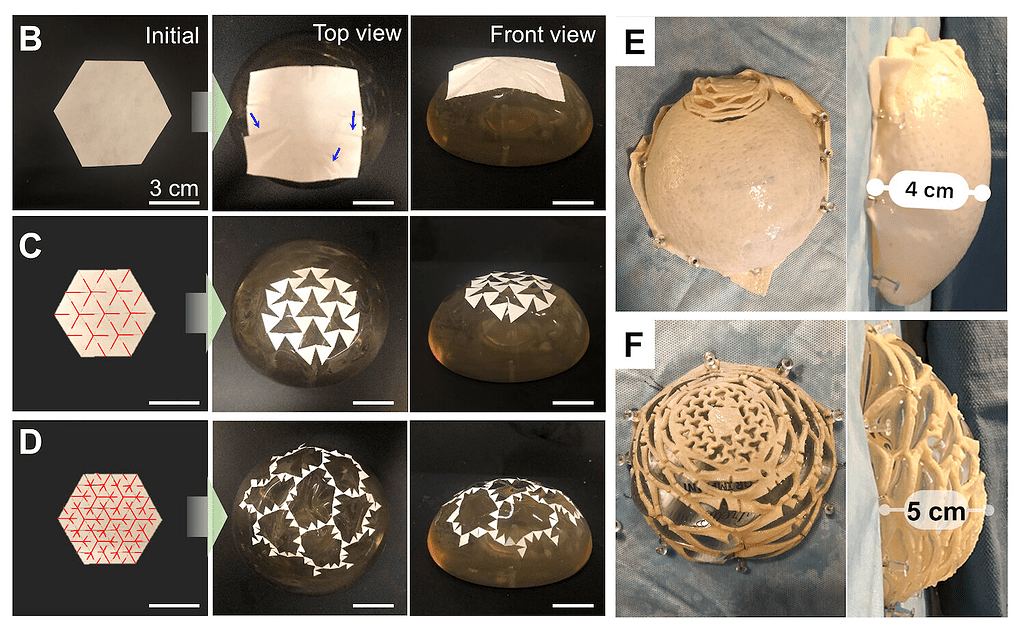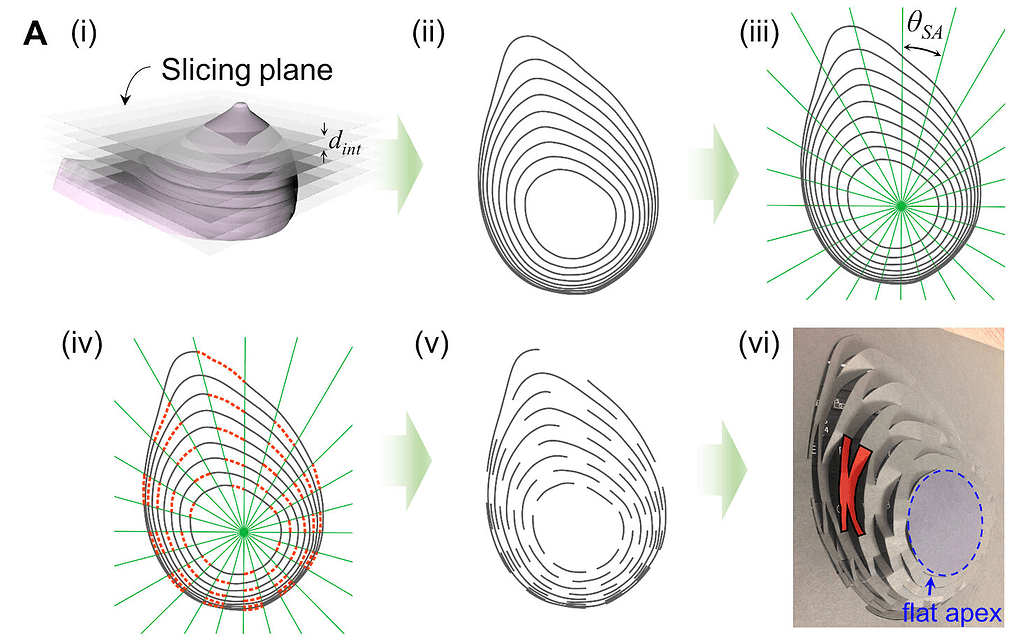Kirigami is a variation of origami — the Japanese art of folding paper. In kirigami, you cut the paper as well as fold it. It’s not exactly the type of approach you’d expect when it comes to reconstructive breast surgery, but according to researchers from the University of Pennsylvania, kirigami could help cover implants more safely and securely, while also using less material.

The insertion of foreign materials such as silicone breast implants is by far the most common reconstructive surgery. But the implants can move slightly, and this effect (called implant malposition) affects many patients even years after surgery. Shu Yang, from the School of Engineering and Applied Science, believes kirigami designs can be leveraged to improve this type of surgery.
“We’ve taken the materials that are currently used in operation rooms for breast reconstruction and addressed two of its major pitfalls by using kirigami designs,” says Yang, senior author of the paper. “Our technique allows the reconstructed breast to more securely take on a more natural shape and can substantially reduce the costs associated with these surgeries.”
Yang had several discussions with Suhail Kanchwala, a plastic surgeon and professor of surgery at the same university, and then started exploring new possibilities for breast implant wrapping material. This material is called acellular dermal matrices (ADMs) and it’s basically a type of biological mesh derived from human or animal skin. ADMs essentially work as scaffolding, creating a matrix for components to stay in place, and they are popular because they minimize the reaction of the immune system to foreign objects.

But there are also limitations with this type of scaffold. Current designs can’t wrap around implants without forming wrinkles or voids. Manufacturers have tried to bypass these effects by cutting or stitching, but for the most part, the problems still remain.
What Yang showed, with the aid of computer models, was that there are better ways to produce ADMs, using designs inspired by kirigami.
“An issue in breast reconstruction is that the manufactured implants are round, which doesn’t effectively mimic the more teardrop-like shape of natural breasts,” says Kanchwala. “So, our project wanted to figure out a way to put round implants under the ADM sheets in a way that allows the reconstructed breast to take on a more natural teardrop-like shape.”
It’s not the first time Yang worked on this type of geometrical approach. Along with co-author Randall Kamien, Yang previously showed that well-placed cuts can transform rigid, 2D materials into highly expandable, flexible, 3D materials that mimic the contours of complex structures. Now, the two have found a practical application for this approach.
It’s not an easy task, says Kamien.

“Normally when you do a skin graft, there’s a muscle or bone to guide the reformation of the tissue,” says Kamien. “So, overcoming this challenge and finding a new and improved way to recreate tissue from the scaffolding material was particularly exciting.”
To overcome it, the two researchers used an algorithmic approach, designing a contour that provided the desired breast-like topography for the material. They started with a 3D computer generated model and then laid out slices that formed different layers, using the algorithm to optimize the slice positions and angles. Ultimately, they ended up with a satisfactory result that was used in a mock operation.

Their solution used up to 40% less material, while also providing a higher degree of customizability in regarding the shape of the reconstructed breast. Perhaps even more excitingly, their approach can be customized from patient to patient, creating the perfect geometry for the reconstructed breast.
“If the patient has a left-sided breast cancer and a left-sided mastectomy, you could scan the right breast and come up with a kirigami design that would very accurately mimic that patient’s natural breast,” says Kanchwala “We’re not there yet, but the possibilities are exciting.”






